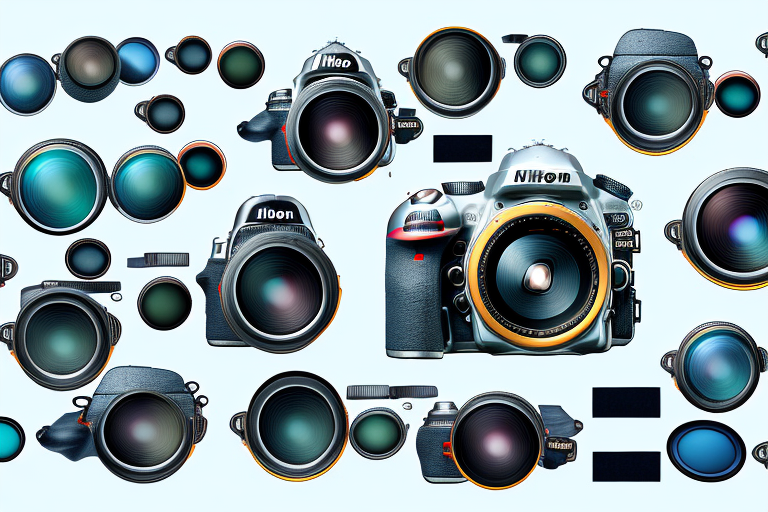The Nikon D500 is a powerful and versatile camera that deserves the best lenses to complement its capabilities. Whether you’re a professional photographer or an enthusiastic hobbyist, having the right lenses can make a world of difference in the quality and creativity of your photographs. In this article, we will guide you through the various lenses that are compatible with the Nikon D500 and help you choose the best ones for your specific needs.
Understanding lens compatibility with the Nikon D500
Before diving into the features and options, it’s important to understand lens compatibility with the Nikon D500. This camera is part of Nikon’s DX-format lineup, which means it has a cropped sensor. As a result, lenses designed specifically for DX-format cameras will provide optimal performance and image quality. However, the D500 also supports lenses designed for Nikon’s full-frame FX-format cameras, but with certain limitations.
When using FX lenses on the D500, the camera will automatically switch to DX mode, effectively cropping the full-frame sensor to match the APS-C size of the D500’s sensor. This reduces the effective focal length of the lens by a factor of 1.5x, providing a narrower field of view. It’s important to keep this in mind when considering FX lenses for the D500.
Additionally, it’s worth noting that using DX lenses on the D500 will result in the camera utilizing the full sensor area, maximizing the field of view and maintaining the intended focal length. This can be advantageous for capturing wide-angle shots or when shooting in low-light conditions where a larger sensor area can help gather more light. However, it’s important to remember that DX lenses may not provide the same level of image quality and sharpness as FX lenses on the D500.
Top features to consider when choosing lenses for the Nikon D500
When choosing lenses for your Nikon D500, there are several key features to consider. The first is focal length, which determines the angle of view and magnification of your shots. The D500’s APS-C sensor introduces a 1.5x crop factor, meaning a lens with a focal length of 50mm will behave like a 75mm lens on a full-frame camera.
Another important consideration is aperture size. A larger aperture allows more light to enter the lens, which is crucial for low-light photography and achieving a shallow depth of field. Lenses with wider maximum apertures, such as f/1.8 or f/2.8, are ideal for capturing images with beautiful background blur and better performance in challenging lighting conditions.
Image stabilization is also a valuable feature, especially for handheld shooting. Nikon offers lenses with built-in optical stabilization (VR) technology, which helps reduce camera shake and allows for sharper images. Keep in mind that the D500 also has in-camera image stabilization, so lenses without VR may still benefit from the camera’s stabilization system.
Additionally, when choosing lenses for the Nikon D500, it is important to consider the lens mount compatibility. The D500 uses the Nikon F-mount, which is a widely supported mount with a vast selection of lenses available. This allows photographers to choose from a variety of lenses, including both Nikon lenses and third-party options, giving them more flexibility in their lens choices.
Prime lenses vs zoom lenses: Which is best for the Nikon D500?
Now that we’ve covered the key features, let’s discuss the difference between prime lenses and zoom lenses and which is best for the Nikon D500. Prime lenses have a fixed focal length and are known for their sharpness, wide maximum apertures, and compact size. They are popular for portrait photography, as they provide a flattering perspective and excellent depth of field control.
On the other hand, zoom lenses offer versatility by allowing you to zoom in and out, adjusting the focal length without changing lenses. They are ideal for situations where you need to quickly adjust your framing or capture subjects at different distances. Zoom lenses are commonly used for events, sports, and wildlife photography.
Both prime and zoom lenses have their distinct advantages, and the choice between them ultimately depends on your shooting style and specific needs. Prime lenses often deliver superior image quality, while zoom lenses offer convenience and flexibility. Consider your intended subjects and shooting conditions to determine which type of lens is best suited for you.
When it comes to price, prime lenses are generally more affordable compared to zoom lenses. This is because prime lenses have a simpler design with fewer moving parts, making them less expensive to manufacture. On the other hand, zoom lenses require more complex mechanisms to allow for the zooming functionality, which can drive up the cost.









